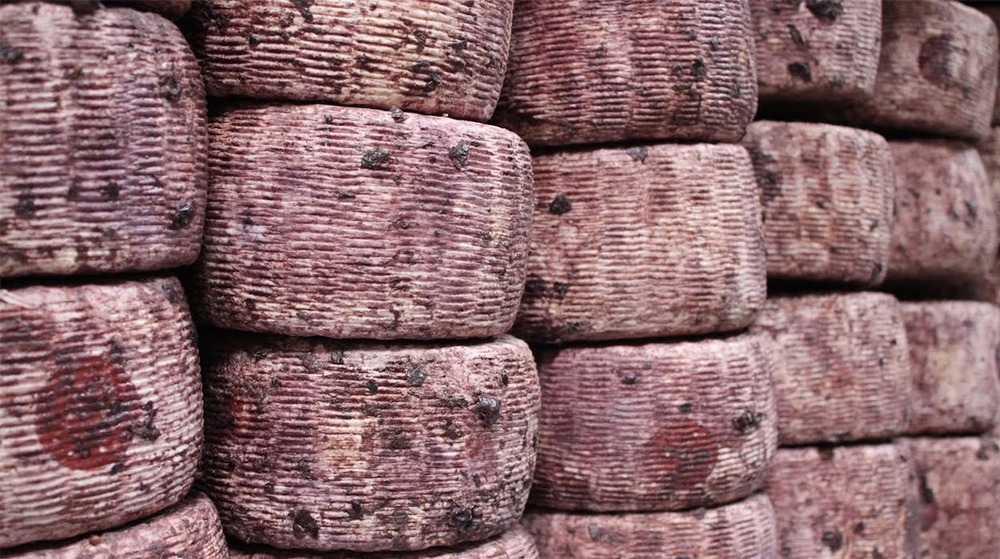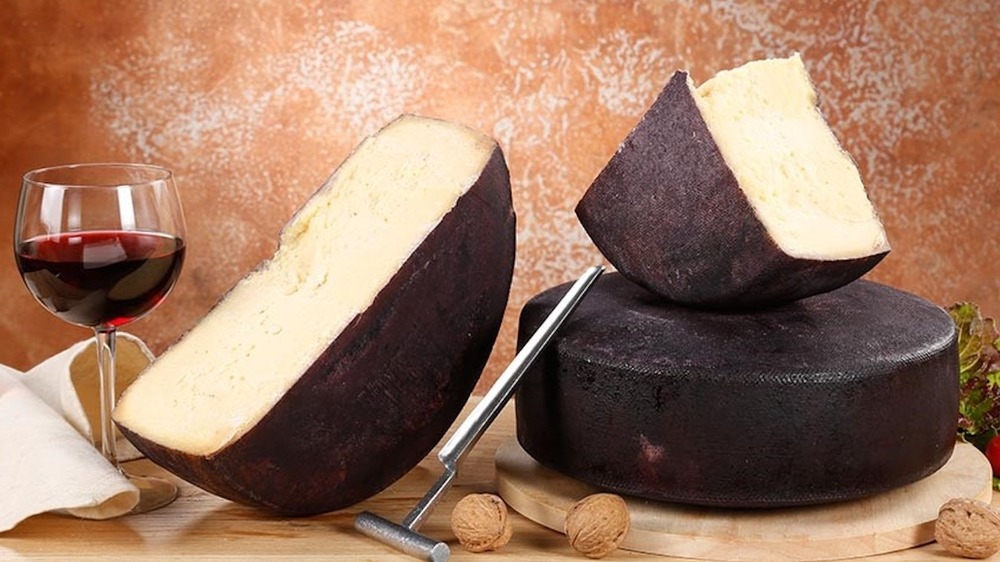You Need To Try Drunken Cheese Before You Die
Peanut butter and jelly. Spaghetti and meatballs. Burgers and fries. All noteworthy comfort food duos. But among the classic culinary combinations many people couldn't possibly live without, cheese and wine is at the top of that list. Now imagine these two beloved indulgences actually being combined into a unit of awesomeness. Atlas Obscura explains that if you ever find yourself in Treviso, Italy, be sure to get a taste of formaggio ubriaco — which means "drunken cheese."
Say what?! Formaggio ubriaco is, at its most basic definition, a hybrid of cheese soaked in wine.
Where did this magical, boozy cheese come from? According to Twisted, in 1917, during World War I, Austrian troops invaded northern Italy and looted homes for supplies. In an attempt to protect their precious cheese, several Italian cheesemakers concealed their product in wine barrels, which were typically too heavy to even consider stealing. After the Austrians were done with their raid, Italians discovered a surprisingly delicious delicacy that has withstood the test of time. Behold: formaggio ubriaco!
How is formaggio ubriaco made?
Not much has changed in a little over a century, because the process for creating drunken cheese still remains the same, according to Atlas Obscura. Local cheese is placed inside barrels filled with pomace, the pulpy residue remaining after the grapes have been crushed to extract juice. After letting the grape remnants soak into the surface, the end result is a creamy, chewy cheese with pleasantly heavy wine flavor notes, a beautiful aroma, and a thick, deep purple crust. This entire process can take anywhere between a few days to a few months — sometimes even up to a few years, according to Meat N' Bone.
"In order for the cheese to refine properly, you have to allow it to make love," says Antonio Carpenedo, award-winning founder and owner of La Casearia Carpenedo, in an interview with SBS. "With the right amount of time, humidity, and ambience, the wine penetrates the cheese. The cheese has been inebriated, not only by wine, but also spices, or aromatic herbs."
Italian natives enjoy formaggio ubriaco served with warm, crusty bread, crispy crackers, tender meats, or in dishes that call for cheese, such as velvety risotto, according to Atlas Obscura. And of course, it's an incredible treat that can be enjoyed solo or on a fancy-schmancy charcuterie board. Dare to pair it with another glass of your favorite red wine because, well, why not? Salute!

